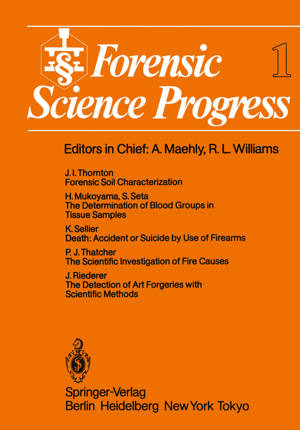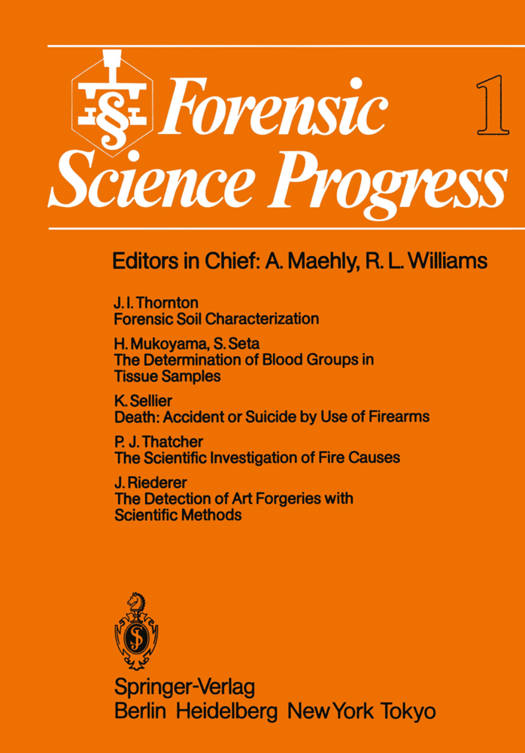
- Afhalen na 1 uur in een winkel met voorraad
- Gratis thuislevering in België vanaf € 30
- Ruim aanbod met 7 miljoen producten
- Afhalen na 1 uur in een winkel met voorraad
- Gratis thuislevering in België vanaf € 30
- Ruim aanbod met 7 miljoen producten
Zoeken
Forensic Science Progress
€ 159,95
+ 319 punten
Omschrijving
Among the sampies collected from the crime scene, tissue sampies such as bone, tooth, hair, nail, skin, muscle and others are very important trace evidence which provide us with available information for personal identification. In order to obtain such information, these tissue sampies should be thoroughly examined using conventional methods including morphology and histo-pathology as weIl as blood grouping. Through the methods described above, blood grouping will give us reliable informa- tion for personal identification to a high degree of certainty. In order to succeed in determining blood groups from tissue sampies, the techniques used should be carefully selected because the content and the distribution of blood group substances are different for various tissue sampies. Moreover, blood group antigen activities are susceptible-to postmortem changes leading to the lowering of their activities. From this point of view, it is essential to adopt a specific and highly sensitive technique for grouping oftissue sampies for routine use. Depending on tissue conditions, adequate pre treatment of the sampies will be required for concentrating blood group substances. For routine blood grouping of tissue sampies, the absorption-inhibition, the hemagglutination-inhibition and the absorption-elution technique prevail and are most favoured in forensic science. In cases of single epithelial cells and extremely small tissue fragments, the mixed agglutination technique can be recommended. Adding to these routine methods, immunohistochemical techniques such as those using fluorescein-Iabelled antibodies, enzyme-Iabelled antibodies and ferritin-Iabelled antibodies have been recently applied to the blood grouping of tissue sampies.
Specificaties
Betrokkenen
- Uitgeverij:
Inhoud
- Aantal bladzijden:
- 174
- Taal:
- Engels
- Reeks:
- Reeksnummer:
- nr. 1
Eigenschappen
- Productcode (EAN):
- 9783642694028
- Verschijningsdatum:
- 19/11/2011
- Uitvoering:
- Paperback
- Formaat:
- Trade paperback (VS)
- Afmetingen:
- 170 mm x 244 mm
- Gewicht:
- 308 g

Alleen bij Standaard Boekhandel
+ 319 punten op je klantenkaart van Standaard Boekhandel
Beoordelingen
We publiceren alleen reviews die voldoen aan de voorwaarden voor reviews. Bekijk onze voorwaarden voor reviews.







